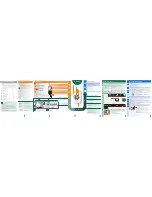
Page 10 — English
OPERATION
Fuel system damage or performance problems resulting
from the use of an oxygenated fuel containing more than
the percentage of oxygenates previously stated
are not
covered under warranty.
ADDING GASOLINE TO THE FUEL TANK
See Figure 10.
DANGER:
Risk of fire and serious burns: Never remove fuel cap
when unit is running. Shut off engine and allow the unit
to cool at least five minutes. Remove cap slowly.
WARNING:
Gasoline and its vapors are highly flammable and ex-
plosive. To prevent serious personal injury and property
damage, handle gasoline with care. Keep away from igni-
tion sources, handle outdoors only, do not smoke while
adding fuel, and wipe up spills immediately.
WARNING:
Always shut off engine before fueling. Never remove
fuel cap or add fuel to a machine with a running or hot
engine. Make sure the unit is sitting on a flat, level sur-
face and only add fuel outdoors. If the engine is hot, let
the unit cool for at least five minutes before adding fuel.
After fueling, immediately replace fuel cap and tighten
securely. Move at least 30 ft. from refueling site before
starting engine. Do not smoke and stay away from open
flames and sparks! Failure to follow these instructions
could result in a fire and cause serious personal injury.
WARNING:
Check for fuel leaks. A leaking fuel cap, tank, or line is a
fire hazard and must be replaced immediately. If you find
any leaks, correct the problem before using the product.
Failure to do so could result in a fire that could cause
serious personal injury.
NOTE: This is a 4-cycle engine. Do not mix fuel and lu-
bricant together.
Mix fuel stabilizer with gasoline according to fuel stabilizer
manufacturer’s directions.
Before removing the fuel cap, clean the area around it.
Remove the fuel cap.
Insert a clean funnel into the fuel tank then slowly pour
gasoline into the tank. Fill tank to approximately 1-1/2 in.
below the top of the tank neck (this allows for fuel
expansion).
Replace fuel cap and tighten until the cap “clicks”.
Clean up any spills before starting the engine.
STARTING AND STOPPING THE PRESSURE
WASHER
See Figures 11 - 15.
NOTICE:
Do not run the pressure washer without water supply
connected and turned on, as this may damage the high
pressure seals and decrease pump life. Completely
unwind the hose from its reel or coil and make sure the
hose is not being restricted by tires, rocks, or any other
objects that may lessen or prevent water flow to the
pressure washer.
Before first time use:
If applicable, remove caution label and plug from the cap
on the pump.
Before starting the engine:
Connect all hoses.
NOTE:
Make sure the pressure washer’s water intake
screen is in place and unclogged before connecting
garden hose.
Check all fluids (lubricant and gas).
Turn on the garden hose then squeeze the trigger to re-
lieve air pressure; hold the trigger until a steady stream
of water appears.
NOTE:
Make sure the faucet is turned on fully and that
there are no kinks or leaks in the hose.
To start the engine:
Turn the fuel valve to the OPEN position.
Put the engine switch in the
ON position.
Move the choke to the START position.
NOTE:
If restarting after a brief stop (i.e., after refueling
or moving), leave the choke lever in the RUN position.
Grasp the starter grip and rope and pull slowly until resis-
tance is felt. Give the starter grip and rope a short, brisk
pull to start the engine.
NOTE: Do not allow the grip to snap back after starting;
return it gently to its original place.
Allow the engine to run for 5 seconds, then move the
choke to the RUN position.
NOTICE:
Routinely make a visual inspection of the pump and
engine during use. If you notice any lubricant leaking
around the pump or engine seals, stop using the pres-
sure washer immediately and take it to a qualified service
center for repair. Failure to do so may cause property
damage.
To stop the engine:
Put the engine switch in the
OFF position.
Содержание BM80930
Страница 41: ...Page Página 19 NOTES NOTAS ...
Страница 42: ...Page Página 20 NOTES NOTAS ...
Страница 43: ...Page Página 21 NOTES NOTAS ...















































